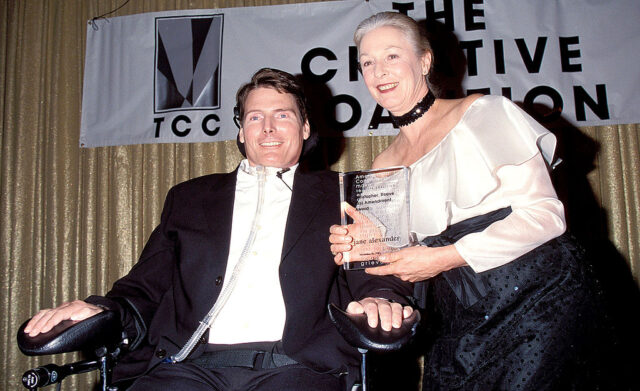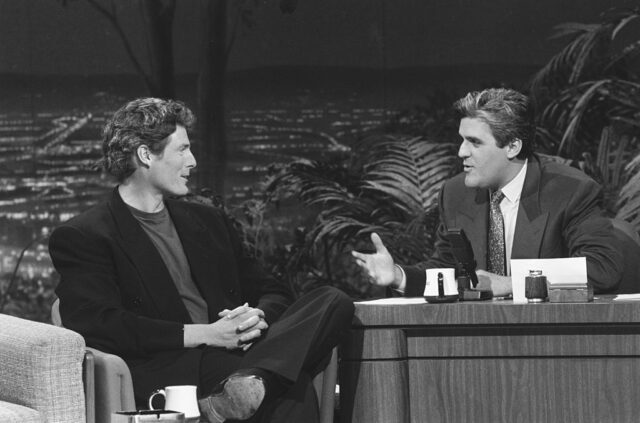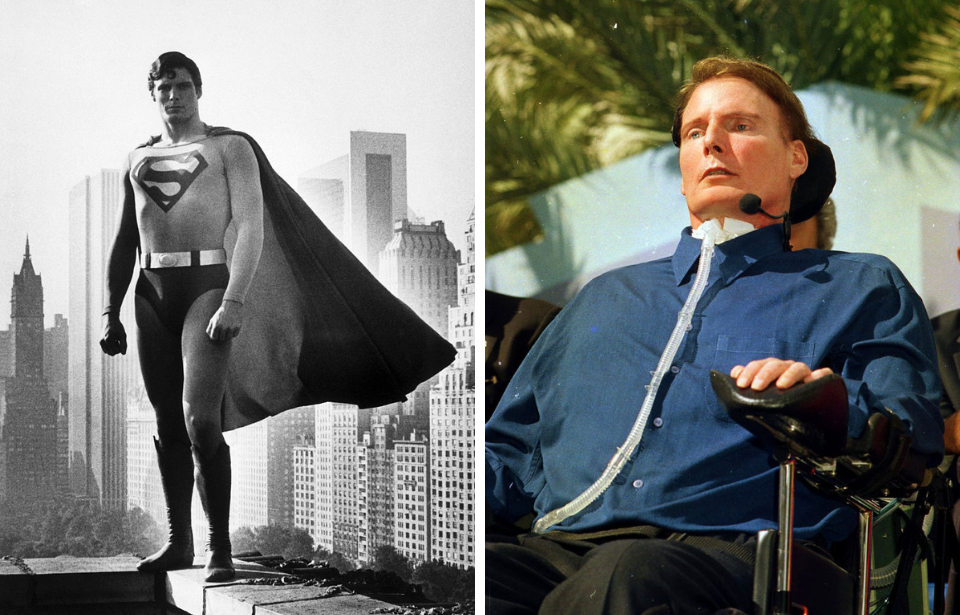In the realm of superheroes, few individuals are as synonymous with the iconic character of Superman as Christopher Reeve. Beyond his celebrated portrayal of the ‘Man of Steel,’ his life took an unexpected turn in May 1995 when a horrific equestrian accident left the actor paralyzed from the neck down. In an eerie turn of events, the actor revealed one of his personal thoughts on being paraplegic in the months before the accident: “Thank God that’s not me.”
Hollywood career
Although Reeve saw minor success in his early career, it truly paled in comparison to his work during and after Superman. In the 1970s, he acted in the play A Matter of Gravity alongside Katharine Hepburn, with whom he had a very close relationship, My Life, and had a small role in the movie Gray Lady Down. In 1978 everything changed when he was cast as Superman in Superman: The Movie.

His portrayal was legendary, and he went on to play the title role three more times. Beyond his superhero persona, Reeve displayed his versatility as an actor by taking on diverse roles in both film and theater. He showcased his talent in movies such as The Bostonians and The Remains of the Day, and in further Broadway performances like The Aspern Papers and Fifth of July. He was given many awards over the years, including a BAFTA, a Grammy, and an Emmy.
The accident
While acting in Anna Karenina, Reeve picked up a passion for horse riding, which he continued for nearly 10 years. It wasn’t long before he bought his own horse – Buck – and the two trained eventing together. The pair were competing in the cross-country portion of a competition on May 27, 1995, when the life-changing accident occurred. Buck refused a jump, causing Reeve to fall head-first onto it. He shattered two vertebrae and was paralyzed from the neck down, rendering him unable to breathe.

Although he was rushed to hospital, the damage was done. Despite initially questioning whether he wanted to continue living, he eventually agreed to surgery that would stabilize his spine. What followed was an intensive period of rehabilitation and a lifetime of paralysis and assistance in breathing. Following the accident, Reeve became an outspoken advocate for spinal cord injury research, tirelessly campaigning for increased funding and advancements in treatment.
Interview with Oprah
After the accident, Reeve did a number of interviews, one of which was in 1998 with The Oprah Winfrey Show. He shared that while preparing for his role as a paralyzed police officer in the TV movie Above Suspicion, he’d visited a rehabilitation center to learn how to play the character accurately. The actor told Winfrey, “Every day I’d get in my car and drive away and go ‘Thank God that’s not me,’ I have to admit that.”

More from us: Michael Keaton Took A Hiatus From Hollywood, and Years Later Candidly Explained Why
Reeve continued, “And then seven months later, I was in this condition. And I remember, in a way, the smugness of that. As if I was privileged in some way, but the point is we’re all one great big family and any one of us could get hurt at any moment, so that taught me a really big lesson about complacency. We should never walk by somebody who’s in a wheelchair and be afraid of them or think of them as a stranger. It could be us. In fact, it is us.”
